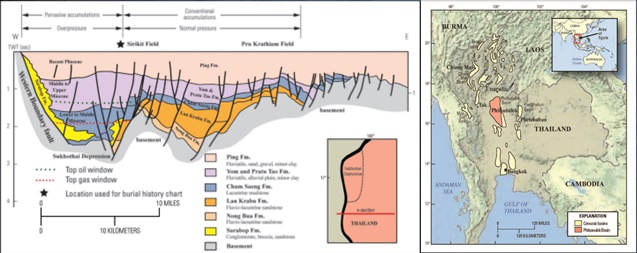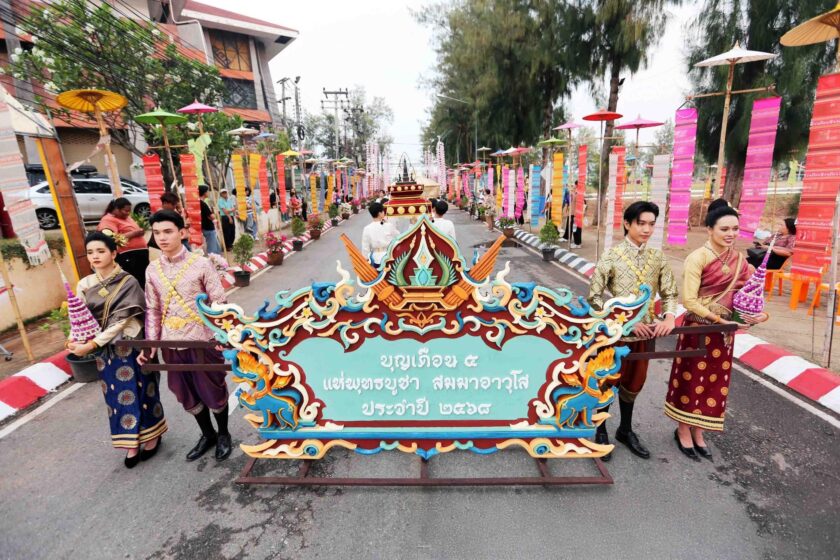KKU expert describes the Pitsanulok earthquake, which happened outside of Thailand’s 16 active fault zones. It’s hidden beneath the carpet. The expert also provides recommendations for earthquake preparedness.
#PitsanulokEarthquake was on Twitter’s Trend and a popular query in Thailand after residents in Pitsanulok, Phichit, Kamphaeng Phet, Phetchabun, Nakhon Sawan, and Loei felt the shaking on June 29, 2023.

Figure: Cross-section of shale oil and shale gas investigation in the Pitsanulok Basin (USGS, 2015)
Source: http://www.ccop.or.th/uc/data/41/docs/8-Thailand_Poster_Korea.pdf
According to Asst.Prof.Kaittisak Sonpirom, the head of the Geotechnology Department, Faculty of Technology, Khon Kaen University, the Pitsanulok earthquake had a magnitude of 4.5 and a depth of 5 kilometers. The epicenter was in Phai Lom sub-district, Bang Kratum district, Pitsanulok. Although the earthquake was not huge, it is noteworthy because it happened as a result of “the hidden fault” movement. The information is relevant to a subsurface investigation by the United States Geological Survey (USGS), which found that there are many faults underneath the fluvial sediment near the Pitsanulok basin (Figure).
“As the Indian plate is now advancing toward the Eurasian plate at a rate of about 5 centimeters per year, the earthquake is likely to occur in active fault zones. The movement of the tectonic plates causes active faults to amass energy and release it as earthquakes. Surprisingly, the Pitsanulok earthquake did not occur in any of the discovered active fault zones. It’s like the fault is hidden under the carpet.”
The “hidden fault” is located outside of the active fault zones that have been researched and have evidence of fault movement over the last 10,000 years. The “hidden fault” lies buried beneath the fluvial sediment layers of the Chao Praya Basin, with no recent evidence of fault movement. Following the latest earthquake, the Department of Mineral Resources and relevant researchers are anticipated to conduct an in-depth investigation. This “hidden fault” could be added as an active fault to Thailand’s present 16 fault zones, which are largely located in the northern, western, and southern regions of the country.
“When we look more closely at the geomorphology of the area using aerial photos and topographic maps, we suspect that an orientation of the Nan River in the NW-SE direction near the earthquake center indicates the fault orientation that caused this recent earthquake.”
Although the Pitsanulok earthquake was only 4.5 magnitude and 5 kilometers deep, Asst.Prof.Nusara Surakotra (Associate Dean for Education, Student Development, and Alumni Relations) stated that it caused property damage as reported in the media. This suggests that infrastructure was not prepared to deal with the seismic threat. There are currently materials that can withstand shaking. Buildings in Japan, for example, are usually composed of materials that reduce the loss of life and property due to earthquakes.
A lecturer from the Department of Geotechnology, Faculty of Technology, Khon Kaen University, studied faults in the Northeastern region of Thailand using seismic wave and trenching techniques. Although there are active faults in the provinces of Loei and Nakhon Phanom, the result indicates a low risk of earthquakes in the region as a whole.
Tips for surviving an earthquake!
Asst. Prof. Kaittisak offers advice for surviving an earthquake. If you are in a high building during an earthquake and cannot get out immediately, clam down and look for secure places to hide, such as under a table or strong building structures, to keep you safe from falling objects. Avoid using the elevator!
If you can exit the building right away, do so with caution. Being out in the open. Do not venture under the trees or the bridge. If you are in a car during the earthquake, pull over and remain calm until the event is over.
“An earthquake is unlikely to occur in Thailand, particularly in the northeast. As a result, don’t get too panicky. However, whether the earthquake occurs in Thailand or elsewhere, we should be aware of survival techniques.”







